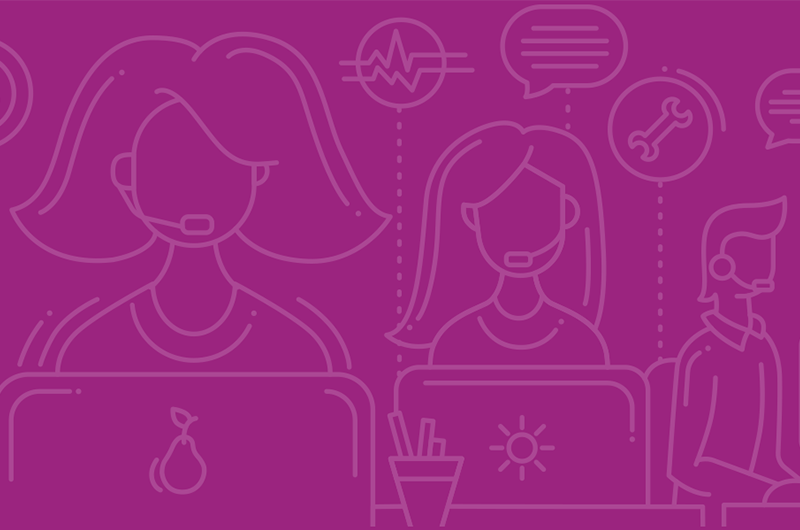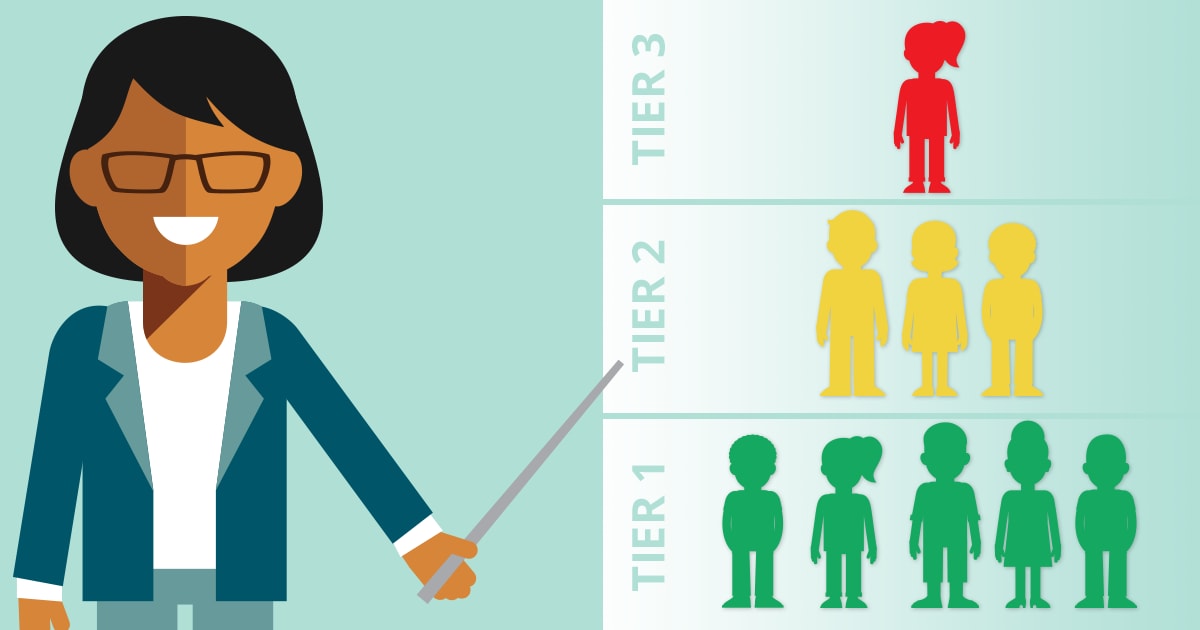Students have diverse and varying learning needs, and it’s the implementation of a multi-tiered system of support (MTSS), which includes the response to intervention (RTI) process, that helps educators identify struggling students early and provide the appropriate level of support.
Are you wondering why so many systems use three tiers, and what exactly happens in each one?
Students are placed in intervention tiers based on beginning- and end-of-year universal screening results and fall, winter, and spring benchmark assessments. Students who are struggling or at-risk of failing are provided targeted support through interventions.
Structured like a pyramid, the three tiers or levels of an RTI framework increase in intensity to help advance a student’s progress. Throughout an effective RTI process, frequent progress monitoring helps educators gauge the effectiveness of instruction, track a student’s achievement, and move a student through intervention tiers according to his or her needs and progress.
Tier 1
Students in Tier 1 work independently at grade level and are taught lessons and concepts through high-quality, scientifically-based classroom instruction, according to the RTI Action Network.
Students are then regularly screened on the learned material using a valid and reliable assessment system and assessment scores are captured. These scores clearly communicate a student’s learning rate and help educators determine which students need additional, supplemental instruction.1
Students receiving extra help are closely monitored for improvement. The length of time students receive additional help can vary, as noted by the RTI Action Network, but at the end of this supplemental period, students showing significant progress usually return to their regular classroom program. Students not showing sufficient progress are moved into Tier 2.1
Tier 2
Students in Tier 2 are in need of strategic intervention and have been identified as at-risk for not meeting end-of-year performance goals. To help improve student achievement, more concentrated, strategic instruction matched to students’ needs is administered. Educators can monitor student progress through frequent progress monitoring and alter instruction as needed.
Students who show adequate improvement are moved back to Tier 1 and work at grade level with additional supports. Students who continue to show insufficient progress may be moved into Tier 3 for increasingly intensive interventions.1
Tier 3
Students in Tier 3 are in need of frequent progress monitoring, as they are at the most risk of failing and falling behind. They benefit from spending part of the school day in small groups or one-on-one intervention sessions where they receive individualized, intensive instruction that targets the group’s or a student’s deficit skills.1
Depending on your district’s RTI framework, Tier 3 may include Title 1 and special education students. If it doesn’t, students who do not show adequate progress in response to these Tier 3 interventions can then be referred for an evaluation to receive special education services.
With aimswebTMPlus, educators can administer valid and frequent assessments and progress-monitoring initiatives. Robust yet easy to understand data will help all educators evaluate a student’s performance, make quick, advantageous decisions about instruction or intervention revisions, and monitor the success of these changes over time.
If a student has an Individual Education Plan (IEP) or other progress goals, an optimal rate of progress is established with aimswebPlus and then compared to the student’s actual progress at regular intervals throughout the year.
Learn more about powerful RTI and reporting options.
Resources:
1 The RTI Action Network. “What is RTI?” Accessed July 20, 2016. http://rtinetwork.org/learn/what/whatisrti.





